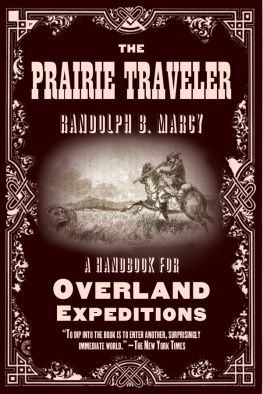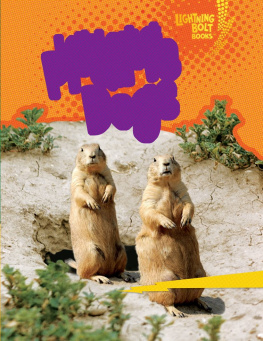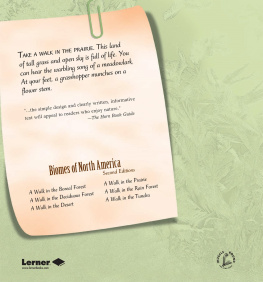First Skyhorse Publishing edition 2014
All rights to any and all materials in copyright owned by the publisher are strictly reserved by the publisher. All inquiries should be addressed to Skyhorse Publishing, 307 West 36th Street, 11th Floor, New York, NY 10018.
Skyhorse Publishing books may be purchased in bulk at special discounts for sales promotion, corporate gifts, fund-raising, or educational purposes. Special editions can also be created to specifications. For details, contact the Special Sales Department, Skyhorse Publishing, 307 West 36th Street, 11th Floor, New York, NY 10018 or info@skyhorsepublishing.com.
Skyhorse and Skyhorse Publishing are registered trademarks of Skyhorse Publishing, Inc., a Delaware corporation.
Visit our website at www.skyhorsepublishing.com.
10 9 8 7 6 5 4 3 2 1
Library of Congress Cataloging-in-Publication Data is available on file.
Cover design by Victoria Bellavia
Print ISBN: 978-1-62873-666-3
Ebook ISBN 978-1-62914-030-8
Printed in the United States of America
CONTENTS.
_______________
.How to prevent them.Corraling Wagons
.Northers
.Cures for the Bite
.Indian Sagacity
Guides and Hunters.
.Their Habits, and Hints upon the best Methods of hunting them

FORT SMITH, ARKANSAS.
LIST OF ILLUSTRATIONS.
_______________
PREFACE.
_______________
A QUARTER of a centurys experience in frontier life, a great portion of which has been occupied in exploring the interior of our continent, and in long marches where I have been thrown exclusively upon my own resources, far beyond the bounds of the populated districts, and where the traveler must vary his expedients to surmount the numerous obstacles which the nature of the country continually reproduces, has shown me under what great disadvantages the voyageur labors for want of a timely initiation into those minor details of prairie-craft, which, however apparently unimportant in the abstract, are sure, upon the plains, to turn the balance of success for or against an enterprise.
This information is so varied, and is derived from so many different sources, that I still find every new expedition adds substantially to my practical knowledge, and am satisfied that a good Prairie Manual will be for the young traveler an addition to his equipment of inappreciable value.
With such a book in his hand, he will be able, in difficult circumstances, to avail himself of the matured experience of veteran travelers, and thereby avoid many otherwise unforeseen disasters; while, during the ordinary routine of marching, he will greatly augment the sum of his comforts, avoid many serious losses, and enjoy a comparative exemption from doubts and anxieties. He will feel himself a master spirit in the wilderness he traverses, and not the victim of every new combination of circumstances which nature affords or fate allots, as if to try his skill and prowess.
I have waited for several years, with the confident expectation that some one more competent than myself would assume the task, and give the public the desired information; but it seems that no one has taken sufficient interest in the subject to disseminate the benefits of his experience in this way. Our frontier-men, although brave in council and action, and possessing an intelligence that quickens in the face of danger, are apt to feel shy of the pen. They shun the atmosphere of the students closet; their sphere is in the free and open wilderness. It is not to be wondered at, therefore, that to our veteran borderer the field of literature should remain a terra incognita It is our army that unites the chasm between the culture of civilization in the aspect of science, art, and social refinement, and the powerful simplicity of nature. On leaving the Military Academy, a majority of our officers are attached to the line of the army, and forthwith assigned to duty upon our remote and extended frontier, where the restless and warlike habits of the nomadic tribes render the soldiers life almost as unsettled as that of the savages themselves.
A regiment is stationed to-day on the borders of tropical Mexico; to-morrow, the war-whoop, borne on a gale from the northwest, compels its presence in the frozen latitudes of Pugets Sound. The very limited numerical strength of our army, scattered as it is over a vast area of territory, necessitates constant changes of stations, long and toilsome marches, a promptitude of action, and a tireless energy and self-reliance, that can only be acquired through an intimate acquaintance with the sphere in which we act and move.
The education of our officers at the Military Academy is doubtless well adapted to the art of civilized warfare, but can not familiarize them with the diversified details of border service; and they often, at the outset of their military career, find themselves compelled to improvise new expedients to meet novel emergences.
The life of the wilderness is an art as well as that of the city or court, and every art subjects its votaries to discipline in preparing them for a successful career in its pursuit. The Military Art, as enlarged to meet all the requirements of border service, the savage in his wiles or the elements in their caprices, embraces many other Special arts which have hitherto been almost ignored, and results which experience and calculation should have guaranteed have been improvidently staked upon favorable chances.
The main object at which I have aimed in the following pages has been to explain and illustrate, as clearly and succinctly as possible, the best methods of performing the duties devolving upon the prairie traveler, so as to meet their contingencies under all circumstances, and thereby to endeavor to establish a more uniform system of marching and campaigning in the Indian country.
I have also furnished itineraries of most of the principal routes that have been traveled across the plains, taken from the best and most reliable authorities; and I have given some information concerning the habits of the Indians and wild animals that frequent the prairies, with the secrets of the hunters and warriors strategy, which I have endeavored to impress more forcibly upon the reader by introducing illustrative anecdote.
I take great pleasure in acknowledging my indebtedness to several officers of the Topographical Engineers and of other corps of the army for the valuable information I have obtained from their official reports regarding the different routes embraced in the itineraries, and to these gentlemen I beg leave very respectfully to dedicate my book.
THE PRAIRIE TRAVELER.
_______________
CHAPTER I.
.
ROUTES TO CALIFORNIA AND OREGON.
E MIGRANTS or others desiring to make the overland journey to the Pacific should bear in mind that there are several different routes which may be traveled with wagons, each having its advocates in persons directly or indirectly interested in attracting the tide of emigration and travel over them.
Information concerning these routes coming from strangers living or owning property near them, from agents of steam-boats or railways, or from other persons connected with transportation companies, should be received with great caution, and never without corroborating evidence from disinterested sources.
There is no doubt that each one ef these roads has its advantages and disadvantages, but a judicious selection must depend chiefly upon the following considerations, namely, the locality from whence the individual is to take his departure, the season of the year when he desires to commence his journey, the character of his means of transportation, and the point upon the Pacific coast that he wishes to reach.








